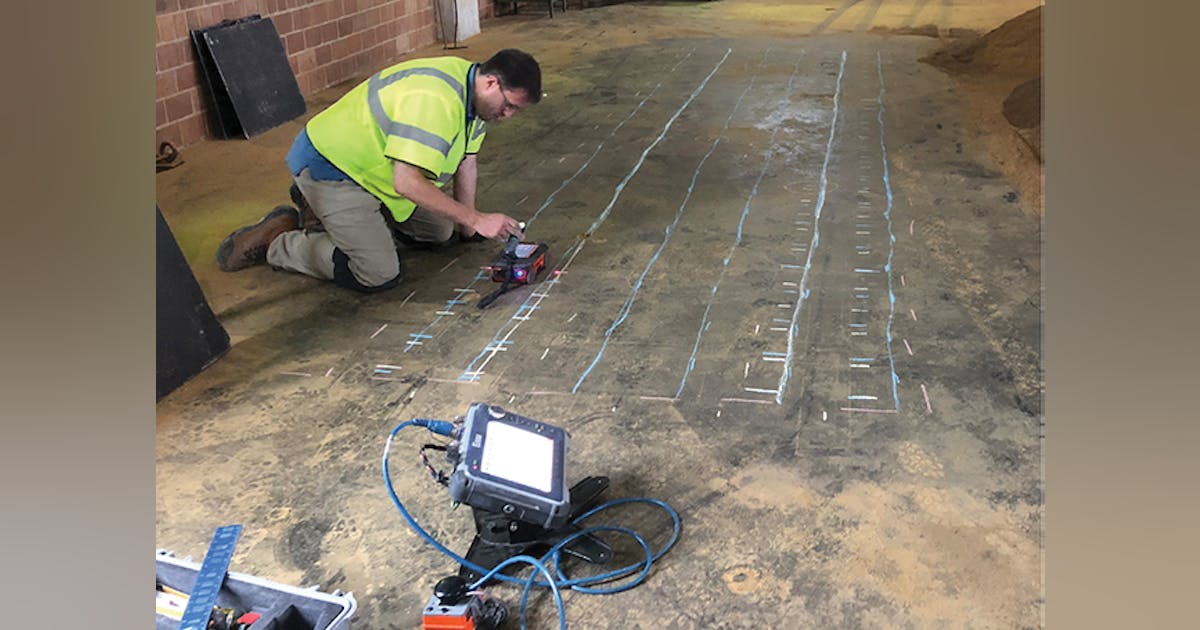Efficient Concrete Scanning Approaches for Construction Projects
Efficient Concrete Scanning Approaches for Construction Projects
Blog Article
Past the Surface Area: Leveraging Advanced Concrete Scanning Techniques for Unmatched Precision and Understanding
In the world of building and construction and infrastructure upkeep, the mission for precision and thoroughness is incessant. Advanced concrete scanning methods have actually become important tools in this quest, using a peek below the surface to unveil a globe of crucial understandings. By using sophisticated modern technologies, professionals can discover anomalies, evaluate the condition of concrete structures, and make informed choices that form the program of projects. The effects of these strategies prolong far beyond plain surface-level examinations, assuring a deepness of accuracy and understanding that is unparalleled.
Significance of Advanced Concrete Scanning
The significance of making use of advanced concrete scanning strategies hinges on the unparalleled accuracy they supply for detecting sub-surface abnormalities and making certain architectural honesty. By using advanced modern technologies such as ground-penetrating radar (GPR), electro-magnetic induction, and progressed finder imaging, building professionals can delve beneath the surface area of concrete structures with a degree of precision that far exceeds standard assessment approaches. Concrete Scanning. These methods enable the identification of surprise dangers like rebar rust, spaces, avenues, or post-tension wires that can compromise the security and safety of a structure with time
Furthermore, advanced concrete scanning provides important understandings right into the overall problem of a concrete element without the need for intrusive measures, lessening the threat of creating damage during the evaluation procedure. The capacity to determine the specific area and depth of prospective concerns enables targeted repair services and upkeep, inevitably extending the life-span of the framework and enhancing its performance. Basically, the relevance of innovative concrete scanning can not be overstated in the realm of construction and infrastructure maintenance, where accuracy and dependability are critical.
Kinds Of Cutting-Edge Technologies

Abnormalities and Problem Detection

In enhancement to GPR, concrete scanning strategies like thermography and impact-echo testing are also reliable in finding abnormalities and problems. Thermography uses infrared modern technology to determine variants in surface area temperature, suggesting potential locations of problem such as delamination or moisture ingress. Home Page On the other hand, impact-echo testing entails assessing acoustic reactions to find gaps, cracks, and other defects within the concrete. By leveraging these innovative methods, experts can proactively resolve structural issues, ensuring the durability and security of concrete frameworks.
Assessing Concrete Condition
Exactly how can engineers precisely evaluate the condition of concrete structures to ensure their durability and security? Examining the concrete problem is a crucial element of maintaining framework honesty. Different advanced concrete scanning strategies are used for this objective. Ground-penetrating radar (GPR) is frequently used to analyze the inner framework of concrete, detecting spaces, cracks, and various other anomalies that might compromise its stamina. Furthermore, impact-echo screening can give insights right into the density and stability of concrete elements. Ultrasonic pulse velocity screening is an additional valuable technique for assessing concrete high quality by determining the speed of sound waves via the product.
Furthermore, visual evaluation continues to be a basic part of concrete problem evaluation. Designers visually analyze the surface area for indications of damage, such as spalling, splitting, or staining. Integrating non-destructive screening approaches with aesthetic inspections enables for a detailed assessment of concrete condition, making it possible for engineers to identify prospective issues beforehand and apply timely upkeep or repair services. By leveraging these sophisticated techniques, designers can ensure the long-lasting longevity and safety and security of concrete frameworks.
Enhancing Decision-Making Processes
In the world of facilities administration, optimizing decision-making processes is crucial for making sure the reliable upkeep and durability of concrete structures. Improved decision-making procedures in concrete monitoring entail making use of sophisticated scanning strategies to collect comprehensive information on the problem of structures. By leveraging technologies such as ground-penetrating radar and 3D imaging, stakeholders can make informed decisions concerning support, repair work, or substitute approaches.
These advanced scanning strategies provide vital insights into the internal structure of concrete, recognizing possible issues such as voids, cracks, or corrosion that may not show up on the surface area. This level of in-depth information permits positive upkeep planning, minimizing the risk of architectural failures and enhancing the total life expectancy of concrete structures.
Furthermore, by incorporating digital paperwork and evaluation devices into the decision-making procedure, stakeholders can track the evolution of concrete problems Related Site over time, making it possible for predictive maintenance techniques and enhancing source appropriation. Eventually, the integration of sophisticated concrete scanning techniques improves decision-making procedures by offering unrivaled accuracy, insight, and effectiveness in framework administration.
Final Thought
To conclude, advanced concrete scanning techniques offer exceptional precision and insight in finding anomalies, problems, and analyzing the condition of concrete structures. By leveraging sophisticated technologies, decision-making processes can be boosted, leading to more effective and educated services for maintaining and repairing concrete facilities. These strategies play a crucial function in making sure the safety and security and longevity of concrete structures, making them a crucial tool in the field of building and design.
In addition, progressed concrete scanning provides important insights right into the general problem of a concrete component without the demand for intrusive measures, reducing the danger of triggering damages during the assessment process - Concrete Scanning. Another innovative technology is 3D X-ray scanning, which supplies comprehensive pictures of the interior framework of concrete, using beneficial details without the demand for devastating screening. In Addition, Concrete Cover Meters are made use of to determine the density of concrete cover over reinforcement bars precisely. Enhanced decision-making processes in concrete management involve making use of innovative scanning strategies to gather thorough information on the condition of structures.In verdict, advanced concrete scanning methods offer unmatched accuracy and understanding in spotting anomalies, defects, and assessing visit this site the problem of concrete structures
Report this page